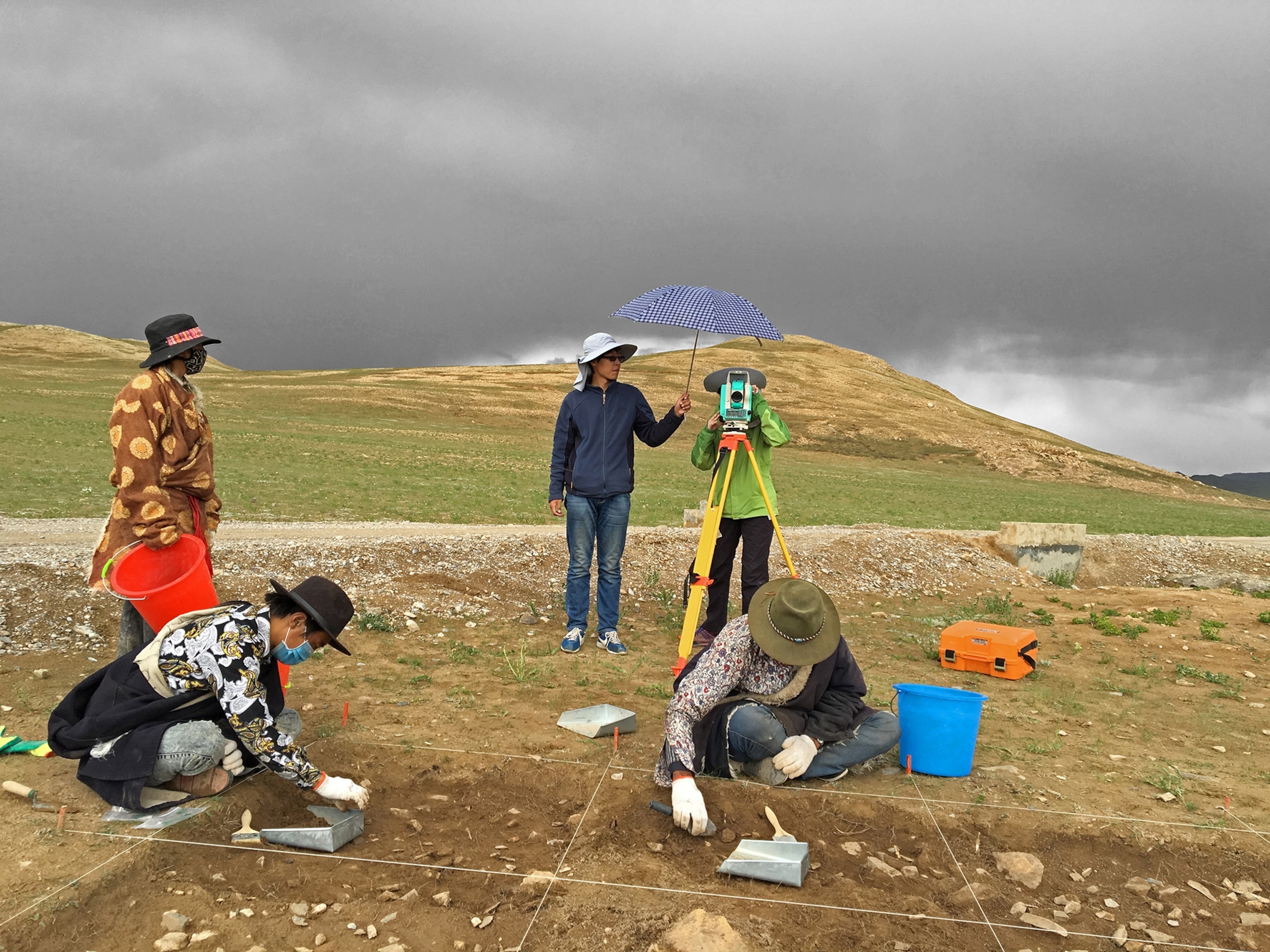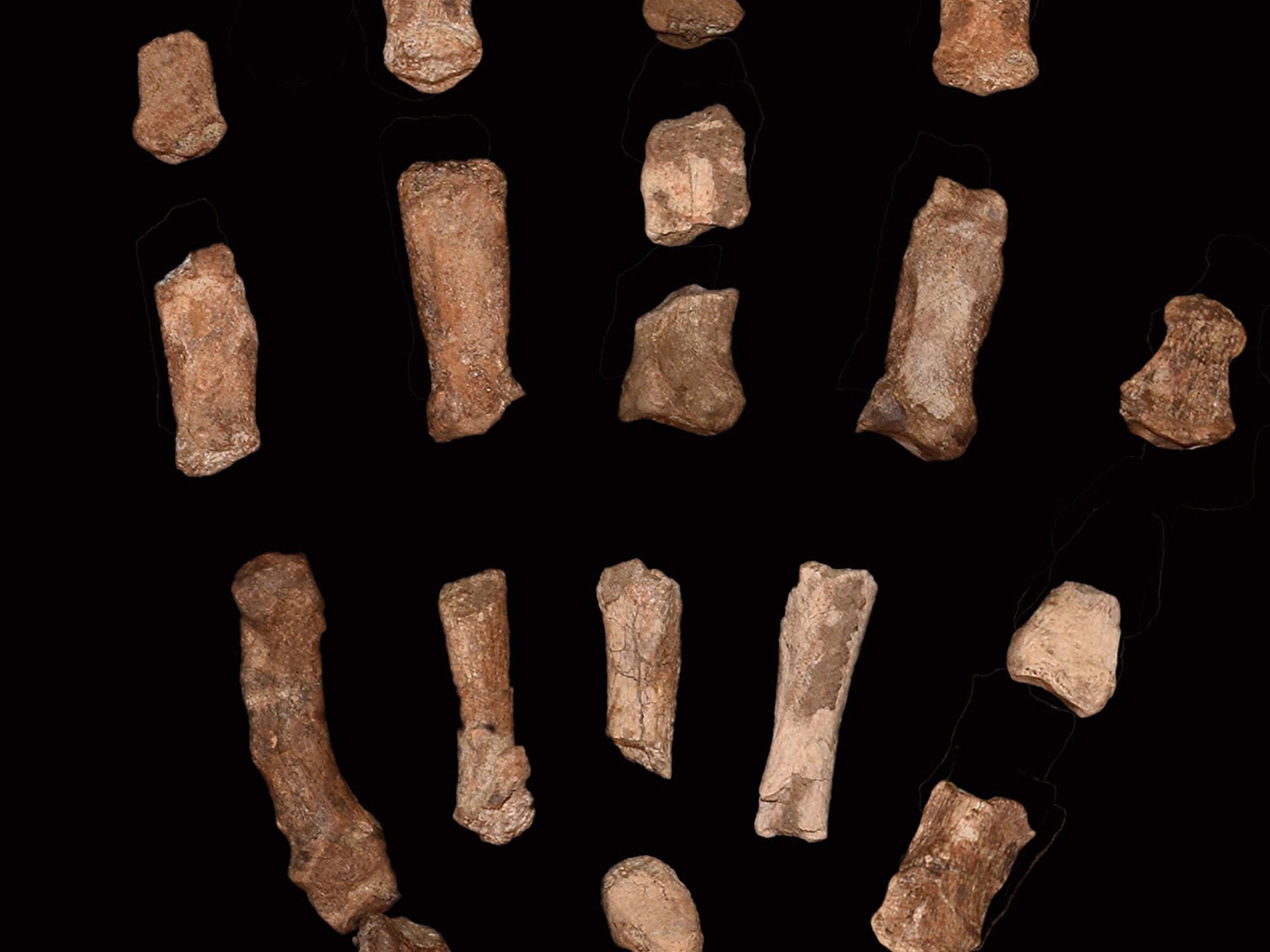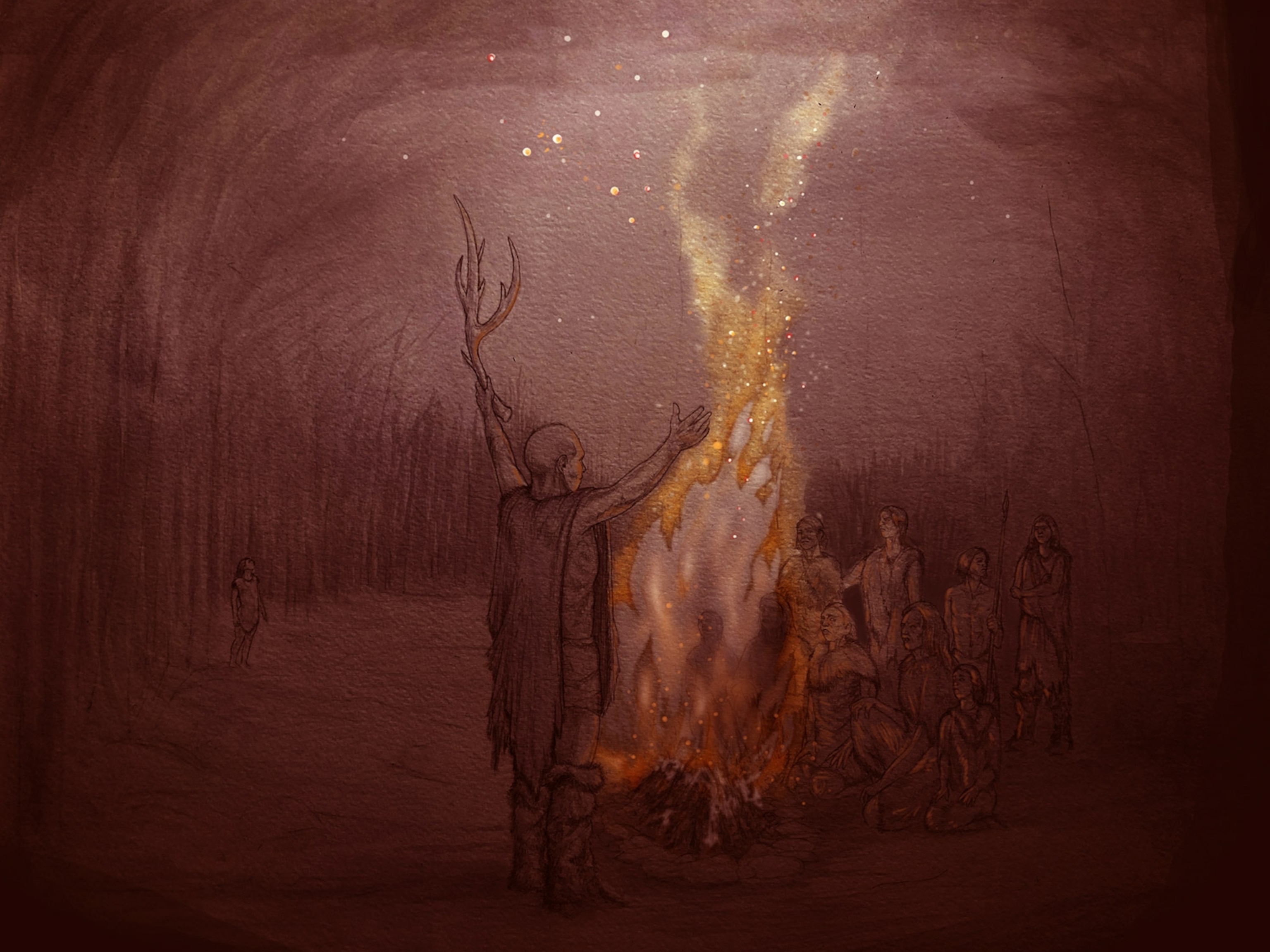The Tibetan Plateau is one of Earth's harshest environments, encompassing nearly a million square miles of land thrust two and a half miles skyward, blanketed in cold, thin air that's difficult to breathe. Now, Chinese researchers have made a remarkable find on the roof of the world: the oldest signs of human activity in this demanding landscape.
Researchers led by Xiaoling Zhang, an archaeologist at China's Institute of Vertebrate Paleontology and Paleoanthropology, have found more than 3,600 stone artifacts in a part of the central Tibetan Plateau called Nwya Devu. The site is rich with black slate—not the ideal raw material for stone tools, but the best available for miles around. Whoever the toolmakers were, they took advantage of what they had, expertly crafting bladed flakes of stone up to eight inches long.
Most of the tools were found buried in dirt that last saw sunlight 30,000 to 40,000 years ago, making Nwya Devu the Tibetan Plateau's oldest well-dated sign of human activity. And at a towering 15,000 feet above sea level, Nwya Devu is also the world's highest-altitude archaeological site that's more than 10,000 years old.
The discovery, published in Science on Thursday, underscores the resilience of modern humans as they fanned out of Africa and across the world. The find also could shed light on how DNA from Denisovans—a mysterious sister species of humans that lived in Siberia—may have helped modern Tibetans thrive.
“It really is the first robust case to be made that there were human populations on the high plateau,” says Jeff Brantingham, an archaeologist at the University of California, Los Angeles, who studies the peopling of the Tibetan Plateau but was not involved with this study.
Sunlight sets the clock
Previously, archaeologists knew that hunter-gatherer humans were living on the margins of the Tibetan Plateau by about 15,000 years ago. Many experts argued that no one lived permanently in the central Tibetan Plateau until about six or seven thousand years ago, once Tibetans had mastered yak and sheep herding and the cultivation of barley. All the while, though, some researchers held out hope for older evidence.
“My name is on publications that conclude [a late peopling of the plateau], and I believed it—but I never really liked it,” says study coauthor John Olsen, an archaeologist at the University of Arizona.
Related: Photos of Animals in High Places
The main issue was that slam-dunk evidence older than 15,000 years ago remained scarce. Some sites had intriguing stone tools, but they were found scattered on the surface. To reliably date ancient tools, researchers needed to find some that were buried and had remained undisturbed since the time of their makers.
Enter Nwya Devu. In 2013, Zhang's team started working at the site, digging a total of 20 test pits. The researchers eventually found a dirt layer that bore stone tools.
To date the tools, Zhang's team relied on the fact that some crystals within these sediments act a bit like stopwatches, tallying up the natural radiation dose they absorb. Sunlight resets this stopwatch, so by measuring how much radiation the sediments soaked up in the dark, Zhang's team concluded that the soils—and the tools within them—were last exposed to sunlight 30,000 to 40,000 years ago.
Olsen speculates that the toolmakers used Nwya Devu as a seasonal workshop and camping site. Hunter-gatherer groups could have camped at the site for several weeks, perhaps timing their visits to the passing of migratory bird flocks, which still today stop to recuperate at lakes within a few miles of the site.
Who made the tools?
No human remains or DNA have been found yet at Nwya Devu, leaving questions around the ancient toolmakers' identities.
“The authors used the word 'Tibetan' a lot, and they act as if the people they're looking at are in fact Tibetans—they're not,” says National Geographic explorer Mark Aldenderfer, an archaeologist at the University of California, Merced. “We don't know who these people were.”
That said, the find could still help inform how researchers interpret modern Tibetans' genetic history. By comparing different people's DNA, geneticists can peer back in time and get a fuzzy glimpse at how genetically distinct populations once mixed and mingled. Using this approach, two recent studies concluded that most modern Tibetan ancestry traces back to a population that diverged from the Han Chinese roughly 9,000 years ago.
However, the DNA also tells a longer, more tangled story. Both studies show signs of differentiation between Tibetans and Han Chinese that go back 40,000 to 50,000 years ago, which perhaps indicates a first wave of people onto the Tibetan Plateau. Because Nwya Devu dates to around the time of these genetically inferred population movements, the site helps map where ancient peoples may have intermingled and the routes they took to get to the plateau.
The site's tools don't resemble those found in eastern China, but they look almost identical to tools recovered from Mongolia and Xinjiang, an autonomous territory in northwest China, and similar tools have also been found in the western Tibetan Plateau, Aldenderfer says.
It really is the first robust case to be made that there were human populations on the high plateau.Jeff Brantingham, University of California, Los Angeles
One of the genetic studies also offers an intriguing clue to how people managed to survive at such high altitudes. The study found that about 30,000 to 60,000 years ago, a group of people living in the region had elevated amounts of DNA from Neanderthals and Denisovans, some of our now-extinct sister species. This group later contributed some ancestry to modern Tibetans, passing along Denisovan DNA.
In particular, modern Tibetans have a Denisovan variant of the gene EPAS1 far more often than one would expect by chance. It's thought that this variant helps Tibetans survive high altitudes by helping their blood absorb more oxygen.
Future excavations at Nwya Devu or elsewhere on the plateau would help clarify matters, especially if researchers find human remains—or manage to pluck bits of the toolmakers' DNA from the soil itself.
“Neither the biologists nor the archaeologists are going to be able to tell this story without the assistance of the other,” Olsen says.




























